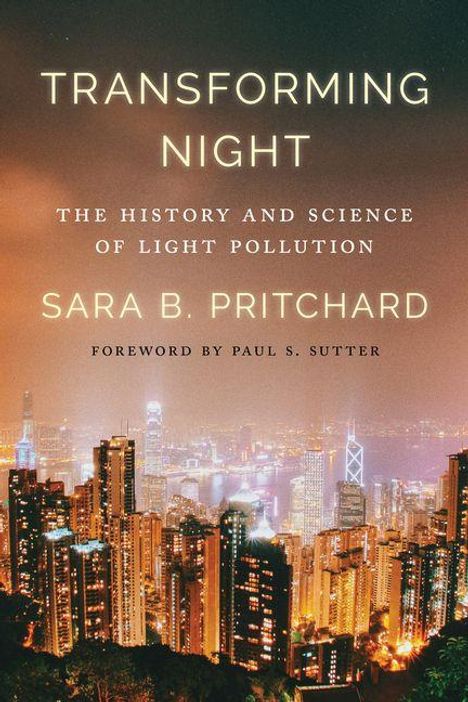Sara B Pritchard: Transforming Night, Kartoniert / Broschiert
Transforming Night
- The History and Science of Light Pollution
Lassen Sie sich über unseren eCourier benachrichtigen, sobald das Produkt bestellt werden kann.
- Herausgeber:
- Paul S Sutter
- Verlag:
- University of Washington Press, 07/2026
- Einband:
- Kartoniert / Broschiert
- Sprache:
- Englisch
- ISBN-13:
- 9780295755205
- Umfang:
- 344 Seiten
- Erscheinungstermin:
- 14.7.2026
- Hinweis
-
Achtung: Artikel ist nicht in deutscher Sprache!
Ähnliche Artikel
Klappentext
Who owns the night--and what is lost as we flood it with light, worldwide? Darkness has become legible--and contested. Blending archival narrative with on-the-ground ethnography, Sara B. Pritchard traces how four fields--astronomy, remote sensing, conservation science, and ecology--have investigated artificial light at night, turning a ubiquitous convenience into a category of harm. From observatories chasing ever-receding darkness to the satellite images that first rendered a nocturnal planet from space and recent "Black Marble" maps, Pritchard shows how methods, instruments, and field sites shape what scientists can know about night and light--and what remains unseen.
Across these encounters, night emerges not as a backdrop but as an environment in its own right--one transformed by rapidly expanding, brightening illumination in the Anthropocene. The book chronicles the ascent of "light pollution," as well as the new challenge of space-based brightness from satellite constellations, even as dark-sky advocates fight to preserve the starry firmament. Attentive to politics as much as photons, Pritchard brings environmental justice to the fore--highlighting tensions among light poverty, forced illumination, and surveillance and calls for "beneficial darkness." She takes seriously Indigenous astronomers' critiques of dispossession and "astro-colonialism," asking what it means to site world-class telescopes on sacred land.
Sweeping from local parks to planetary vistas, Transforming Night reframes a familiar story of modern light as a history of changing nights--past, present, and possible. It will engage readers in environmental history and humanities, science and technology studies, and the sciences themselves, along with dark-sky activists and anyone drawn to the beauty and politics of the world after nightfall.




